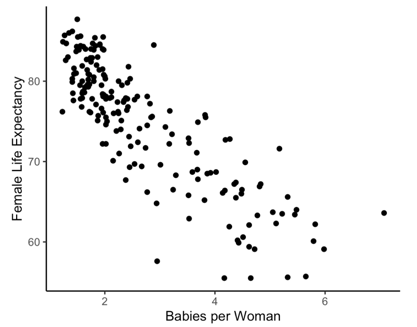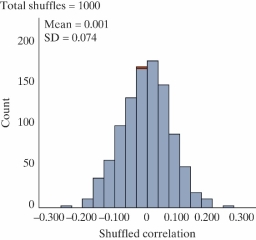Multiple Choice
Data from gapminder.org on 184 countries was used to examine if there is an association between (average) female life expectancy (that is, the average lifespan of women in the country) and the average number of children women give birth to for the year 2019. A scatterplot of the data follows. 
-Below is a picture of a simulated null distribution of correlation coefficients created using the Corr/Regression applet. How would you use this distribution to calculate the p-value? 
A) Find the proportion of simulated correlation coefficients greater than zero.
B) Find the proportion of simulated correlation coefficients as far away from zero or further than the one observed.
C) Find the proportion of simulated correlation coefficients as small or smaller than the one observed.
D) Find the proportion of simulated correlation coefficients as large or larger than the one observed.
Correct Answer:

Verified
Correct Answer:
Verified
Q34: Data from the World Bank for 25
Q35: Data from gapminder.org on 184 countries was
Q36: The following scatterplot displays the finish time
Q37: Data from gapminder.org on 184 countries was
Q38: A student in an AP Statistics class
Q40: It is commonly expected that as a
Q41: Social warmth is a term referring to
Q42: Observations with values of the explanatory variable
Q43: Annual measurements of the number of powerboat
Q44: Data from gapminder.org on 184 countries was